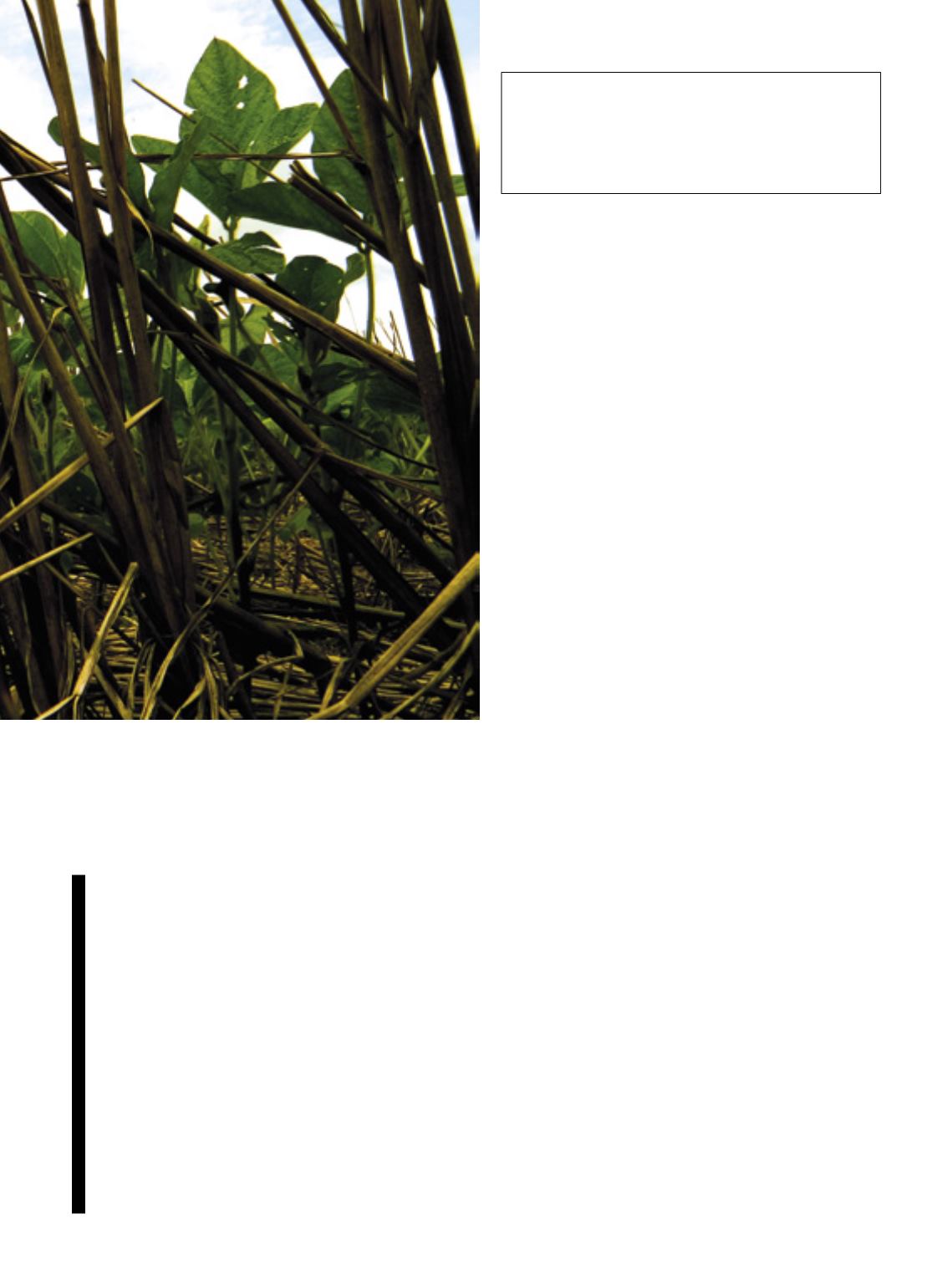
STEPBYSTEP
Recommendations for preventing the selectionof
tolerant and resistant species fromgettingmore severe,
thusprolonging theperiod for anefficient useof the
technologyof theglyphosate resistant crops.
Priortoinfestation:
n
Monitor fields and informationof theoccurrence in the region;
n
Utilizebest agricultural practices, likedirect planting;
n
Keep the soil covered–mulchor green
fertilization– to turn theonset ofweedsdifficult;
n
Keepcleanequipment pieces,machineryandvehicles
that pass through the fieldsor infestedareas;
n
Keepclean footwearwornby the farmers, employees
or servicepersons, and the sameholds true for vehicle tires,
equipment in infestedareasprior toentering in
theproductionzoneandsurroundingareas.
n
Eliminate resistant plants that surfacealong the lanes,
corridors andbordersnear theproductionareaof the farm;
n
Useonly certifiedsoybeanor successioncropseedandof good
quality, apractice that is equallya relevant tool in reducing risks.
After infestation:
n
Monitor the fieldand thearrival of resistant plants;
n
Adopt best agricultural practices, likedirect planting, etc.;
n
Keep the soil covered–mulch, green fertilization– tomake
theonset ofweedsdifficult;
n
Implement cropandherbicide rotation, not related to
glyphosate– inorder tocontrol the resistant plants,
which is thecase, for example, of secondcorncrop
or cotton insuccession tosoybeans;
in this case, noRRsoyvarieties shouldbeused;
n
Pluckandeliminatepossibly resistant plants,
byhoeingormowing, etc. toprevent theplant from
disseminatingor fromforminga seedbank in the soil;
n
Resort tochemical control toprevent escapes,
plantsnot reachedbymowingor hoeingand,
once identified, disseminationhas tobeprevented;
n
Doherbicide rotationwithdifferent active
mechanisms andapplications insequence;
n
Prevent resistant andsuspicious
plants fromgenerating seeds;
n
Resort topractices that exhaust the seedbank.
Source:EmbrapaSoybean
89
RESISTANTWEEDS
The following are the resistant weeds: horseweed (Conyza
canadensis, C. bonariensis e C. Sumatrensis), balmscale grass
(Digitaria insularis), perennial ryegrass (Loliummultiflorum),
tall windmill grass (Chloris elata), amaranthus (Amaranthus
palmeri) wiregrass (Eleusine indica). In the 2017/18 growing
season, the discovery of the resistance of balmscale grass
to glyphosate completes 10 years, while the resistance of
horseweed completes 13 years.
Mapped, someweeds occur together in the same region. It is
the case of horseweed, present fromRioGrande do Sul to the
cerrado region, and balmscale grass, present fromParaná to
the cerrado region. According to Fernando Adegas, all the eight
plants are difficult to control once they have surfaced. In this
situation, farmers are advised to do soybean variety rotation,
herbicide and crop rotation –without the same defense
mechanism– in order to keep theweeds under control.
Now, depending on the degree of infestation
and on the varieties of resistant plants in the
field,theseherbicidescouldrepresentupto30
percent of the production cost. “Innormal cir-
cumstances, it would represent from 10% to
15%”, Adegasconcludes.
n


